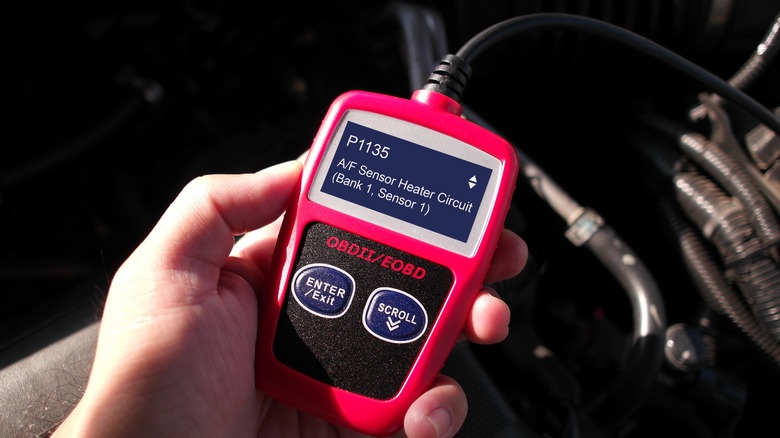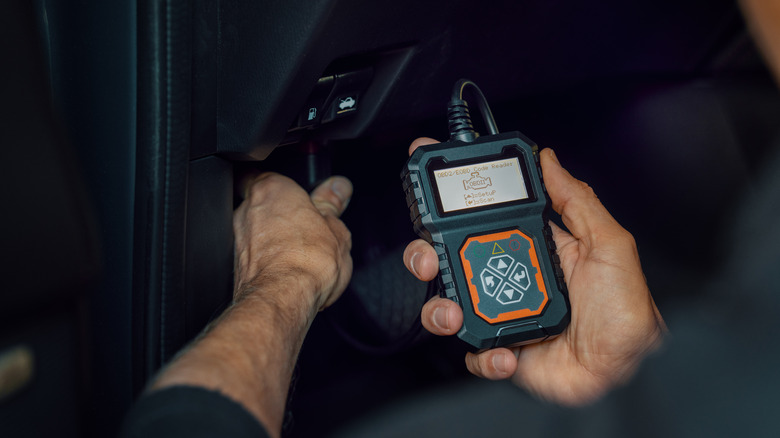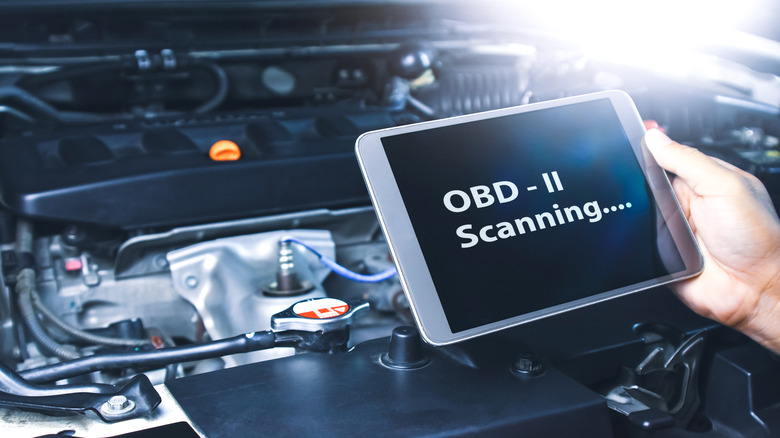What Does OBD Stand For? The Automotive Acronym Explained
If you've ever gone to a mechanic for a check engine light problem on your car, then chances are you've heard the technician say something about an OBD scanner. It's a handheld phone-like device that gets plugged under your steering wheel and shows a bunch of information on the display. During mandatory emission tests or annual inspections, you've probably encountered the same OBD acronym, too. Maybe the inspector told you that you have an emission-related OBD code that needs fixing for you to pass the test. Or perhaps you saw the OBD-II term printed on your inspection report.
But what exactly does OBD stand for? OBD in automotive stands for On-Board Diagnostics. This built-in system monitors your car's key functions and informs you whenever something is amiss, usually by triggering the check engine light on your dashboard. It's essentially a self-diagnosis and reporting tool to help you and your mechanic identify what's wrong with the vehicle.
How does the OBD work?
The On-Board Diagnostics system works by checking in with the multiple sensors located throughout the car. These sensors track individual components and conditions (e.g., oxygen levels in the exhaust system, coolant temperature) and report the collected data to the Electronic Control Unit (ECU), which, in turn, analyzes the information.
Once the ECU determines that the data from a specific sensor is beyond its expected values, a Diagnostic Trouble Code (DTC) is created and saved in the system. This code will start with one of four letters: P for powertrain faults, B for body faults (malfunctions inside the car like airbag and seat belt issues), C for chassis faults (troubles in the chassis, such as brake or suspension), and U for network communication faults. Besides logging a DTC, the OBD can also activate your check engine light to warn you about the problem.
Since the check engine light represents an array of errors, one way to pinpoint the exact issue is to check what DTC was stored in the system. To do so, you'll need to use a code reader. Find the OBD-II port in your car, usually under the driver's side dashboard, and connect the reader. It should be able to tell you the DTC created. From here, you can either fix the problem yourself — some are easily corrected, like a P0455 code, which usually means your gas cap isn't installed or appropriately sealed — or take your vehicle to your dealer or local shop to get looked at.
OBD-I versus OBD-II
OBD-I and OBD-II are both short for On-Board Diagnostics. However, they do refer to two different generations. OBD-I, the first generation of On-Board Diagnostics, was introduced to vehicles in the late 1980s. Originally designed to be a monitoring system for the car's emission control components, it makes sure the parts are performing as expected and producing minimal emissions. If they're malfunctioning, they could potentially increase harmful emissions that affect the air quality. That's when the OBD-I steps in and alerts owners about such malfunctions. It's also the OBD-I that tells technicians what the exact malfunction is.
The problem with the first-generation OBD, though, is that the system was limited. It was only calibrated to a certain level and isn't designed to monitor all the emission-related parts. Add this to the fact that the OBD-I wasn't standardized when it first came out. Back then, each manufacturer had their own OBD system and codes. So, imagine how much of a challenge it was for a technician who had to check multiple car brands in a day.
As an improvement to the system, the OBD-II, the second-generation On-Board Diagnostics, was born. It became a requirement for all US car models starting from 1996. Compared to the first generation, the OBD-II comes with expanded monitoring capabilities and improved calibration. Plus, it has a more straightforward and standard user operation, meaning it now uses the same OBD-II port, connector, and diagnostic trouble codes for all car makes. While there are still manufacturer-specific OBD-II codes, there are a lot of generic ones that will appear in every car model as well.


